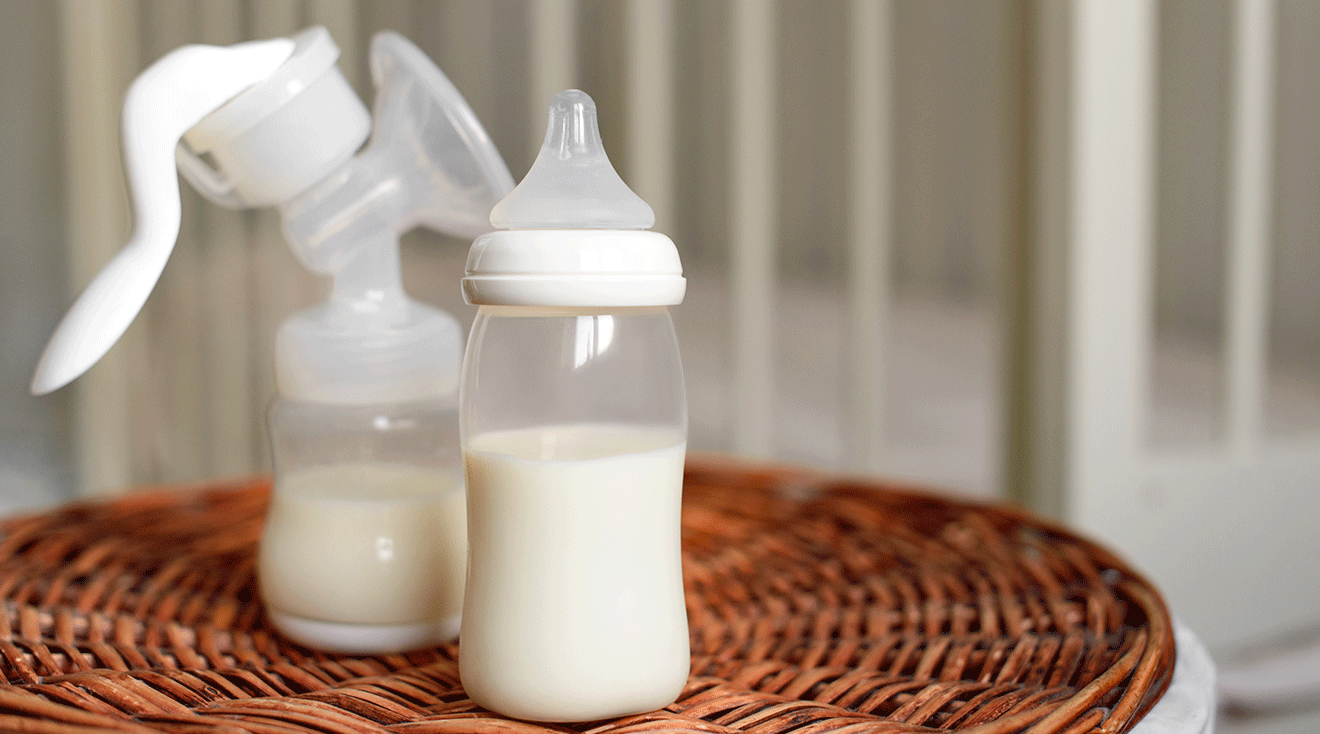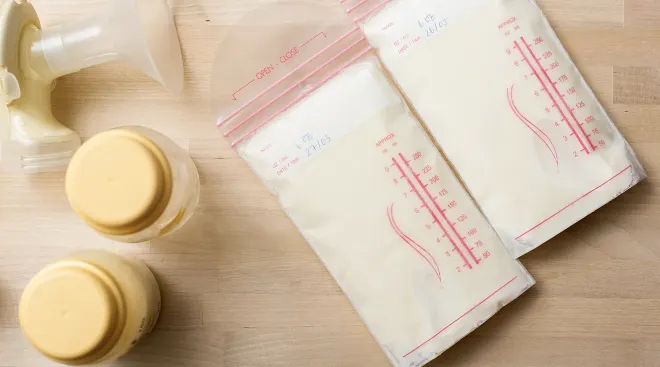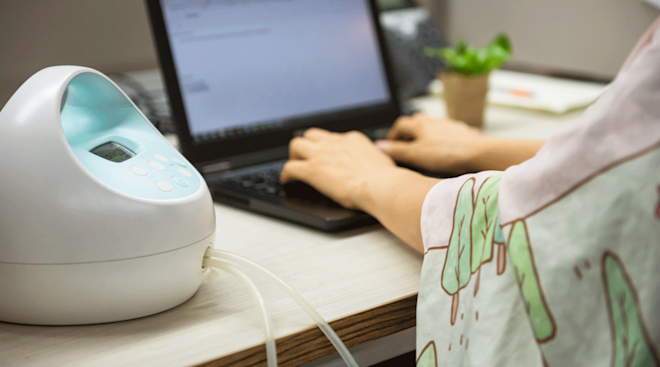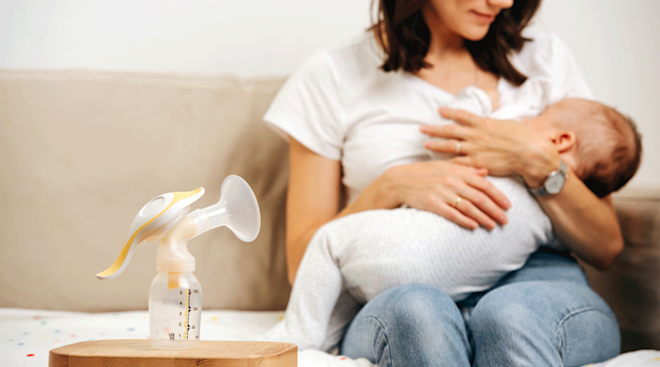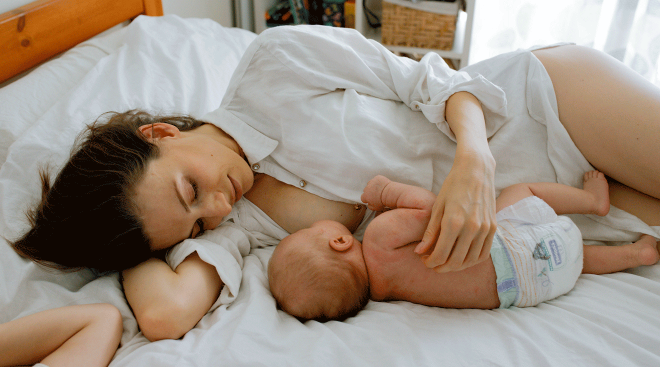How to Dry Up Breast Milk Stat
Whether you choose not to breastfeed at all or you have a medical reason to stop, you might be wondering how to dry up breast milk naturally. While it’s best to approach weaning as gradually as possible, it’s also important to have a clear plan for doing so, says Lucy Chapin, CNM, a midwife at Mad River Birth and Wellness in Vermont. This plan should take both baby’s feeding needs and your physical health into account, since going cold turkey can cause uncomfortable engorgement symptoms and increase your risk for problems like mastitis, she says.
Learn how to dry up breast milk, how long it takes breast milk to dry up and more, ahead.
There are a few reasons you might need to dry up your breast milk. Here are a few of the most common ones:
- You don’t want to breastfeed. There are many reasons a new mom might choose not to breastfeed or decide they want to stop breastfeeding—from latching to concerns about baby’s weight to cultural norms—according to the Centers for Disease Control and Prevention (CDC). Prioritizing your mental health is also a very valid reason, adds Chapin. Additionally, research shows that past or recent abuse is associated with stopping breastfeeding early.
- Lack of support. It’s difficult enough to breastfeed with a supportive network of family, friends and healthcare providers, so women not getting the necessary at-home or medical support may choose to dry up their milk and switch to formula instead, says Chapin.
- Medical complications. Postpartum issues for both Mom and baby could result in an expected end to breastfeeding. Mom could need to start medication that isn’t compatible with breastfeeding, says Chapin. Some medical conditions and metabolic disorders in newborns may require them to have specialized formula instead of breastmilk, says Corrie Moran, RN, BSN, IBCLC, a lactation consultant at Children’s Hospital New Orleans. “A mother may also become pregnant while breastfeeding, and if she has complications with her new pregnancy she may be advised to stop breastfeeding,” Moran adds.
- Lack of paid leave. Chapin says that since some new moms don’t get any paid maternity leave, they need to go back to work soon after giving birth. If they’re unable to pump at work, they may have to dry up their milk.
- Infant loss. Moran says that moms who experience a miscarriage in the second trimester, a stillbirth or the postpartum loss of their baby may understandably find it traumatic to continue lactating, and want to dry up their breast milk as quickly as possible for their mental health.
If you’ve been breastfeeding, it’s best to wean as gradually as possible. But if you want to move things along, there are a few methods you can try, says Chapin. Always make sure to work with healthcare providers—ideally including a lactation consultant—when weaning, particularly if you’re planning to take herbs or medications, or have a history of depression and anxiety, she adds.
“Some people have mood shifts when they stop breastfeeding,” Chapin explains, “so it’s critically important for the person weaning—as well as the baby and the person’s inner circle—to be mindful of this.” Here are some tips:
Avoid stimulating your breasts
Again, going cold turkey isn’t ideal if you’re already in the throes of breastfeeding. But if don’t plan on nursing or pumping at all, you can simply abstain from breastfeeding from the get go.
Space out or drop feeding and pumping sessions
If you have a little bit more time to work with, Moran says the best way to wean is by either spacing out feedings or pumping sessions (i.e. waiting four hours instead of three between feeds) or eliminating feeding or pumping sessions one at a time. Once you’ve dropped a pump or feed, Moran suggests waiting a few days before dropping another one, and so on until you’re no longer pumping or feeding at all.
Pump for comfort only
Wondering how to dry up breast milk without getting mastitis? You may need to “pump to comfort,” says Chapin, in order not to have an abundance of stagnant milk, which poses a risk of complications like mastitis or breast abscess. This means pumping or hand-expressing milk only until the sensation of fullness is relieved, not until your breast is soft and empty, Chapin explains.
Make lifestyle changes
Chapin says it’s important to avoid accidentally stimulating lactation while you’re going about your daily routine, so avoid running your breasts under warm water while in the shower and wear a well-fitted, soft bra without any underwire that won’t rub against your nipples. While these tips won’t work well on their own for drying up breast milk, they may help you reach your goal faster if you incorporate them alongside other strategies.
Take herbal supplements
There isn’t much scientific evidence to support the use of herbs to dry up breast milk, but women have used a variety of supplements for centuries to speed up the process, according to a 2013 review of studies. Moran says peppermint, sage and parsley are most commonly recommended for decreasing milk supply.
Take medications
Decongestants like Sudafed (pseudoephedrine) can have a drying effect on the body that also translates to the breasts, promoting a quicker drying up of milk, according to research. Some types of birth control, Moran notes, may also contribute to a decrease in supply.
Typically, if you don’t plan to breastfeed at all from the start, it can take up to several weeks to dry up your milk—although everyone is different.
The timeline will be variable for those who’ve been breastfeeding too, says Chapin: It depends on factors like your milk supply and how old baby is, as well as whether or not baby is already getting formula supplementation.
For some breastfeeding women, milk will dry up in several days; others will need to allow a few weeks to completely stop making milk, according to Children’s Mercy Hospital Kansas.
Frequently Asked Questions
How do you stop milk from producing in the first place?
You can’t completely prevent lactation: Your breasts typically start to make milk in the first couple of days after you give birth, according to Kaiser Permanente—even if you don’t breastfeed. You may have some leaking and engorgement, which typically gets better over a few days. It usually takes up to several weeks to completely dry up your milk; in the meantime, make sure to take steps at home to decrease discomfort: Wear a bra that fits and provides good support, apply cold packs to your breasts and take OTC medications to reduce pain and swelling.
What’s the fastest way to dry up breast milk?
There’s no one way of drying up breast milk that’s the fastest for all moms, says Leigh Anne O’Connor, IBCLC, LCCE, a New York City-based lactation consultant. It depends on how old baby is and how recently you gave birth. It also depends on your individual body, she adds, noting that while some people respond quickly to herbs like peppermint, others require medication like cabergoline to reduce their prolactin levels.
What is rapid weaning?
Weaning means you’re replacing breast milk with another form of nutrition like cow’s milk, and rapid weaning means you’re making this replacement suddenly or unexpectedly rather than gradually.
O’Connor says rapid weaning and quickly drying up breast milk basically involve the same strategies, but that “weaning” usually involves the baby or child while “drying up milk” means Mom is attempting to discourage milk production or quickly stop lactating.
How can you get relief from engorgement while drying up breast milk?
Engorgement is likely to happen if you’re weaning suddenly from breastfeeding or pumping, and can not only be extremely uncomfortable but raise your risk for complications, according to La Leche League International. Moran recommends wearing a supportive bra and taking steps to manage inflammation and soreness, which can include applying ice packs or cold compresses and taking ibuprofen, if needed. You can also pump for comfort to relieve fullness, but make sure not to fully drain your breasts, says Moran, since that could cause more milk production.
Can binding help dry up breast milk?
Both Moran and O’Connor discourage moms from binding their breasts to dry up milk since it doesn’t work that well and can cause issues like plugged milk ducts, mastitis and abscess. Stick to a soft, comfortable and supportive bra, and wear it 24 hours a day until you begin to feel relief from pressure and fullness, suggests Children’s Mercy Hospital Kansas.
If you’re looking into drying up breast milk, make sure to work with a healthcare provider, ideally a lactation consultant.
Please note: The Bump and the materials and information it contains are not intended to, and do not constitute, medical or other health advice or diagnosis and should not be used as such. You should always consult with a qualified physician or health professional about your specific circumstances.
Plus, more from The Bump:
Lucy Chapin, CNM, is a midwife at Mad River Birth and Wellness in Vermont.
Corrie Moran, RN, BSN, IBCLC, is a lactation consultant at Children's Hospital New Orleans.
Leigh Anne O’Connor, IBCLC, LCCE, is a New York City-based lactation consultant with more than two decades of experience working with breastfeeding families. She’s also a Lamaze-Certified Childbirth Educator.
Centers for Disease Control and Prevention, Breastfeeding: Facts, July 2024
BMJ Open, Past and Recent Abuse Is Associated with Early Cessation of Breast Feeding: Results from a Large Prospective Cohort in Norway, December 2015
Pediatrics in Review, Complementary, Holistic, and Integrative Medicine: Advice for Clinicians on Herbs and Breastfeeding, August 2013
University of Arkansas for Medical Sciences, Drying Up Your Milk
Children’s Mercy Hospital Kansas, Breast Feeding - Discontinuing Breast Milk Production
Kaiser Permanente, Postpartum Breast Care When You Don’t Plan to Breastfeed: Care Instructions, July 2023
Children’s Minnesota, Breastfeeding: Weaning
La Leche League International, Sudden Weaning for Medical Reasons, July 2015
Learn how we ensure the accuracy of our content through our editorial and medical review process.
Navigate forward to interact with the calendar and select a date. Press the question mark key to get the keyboard shortcuts for changing dates.

































